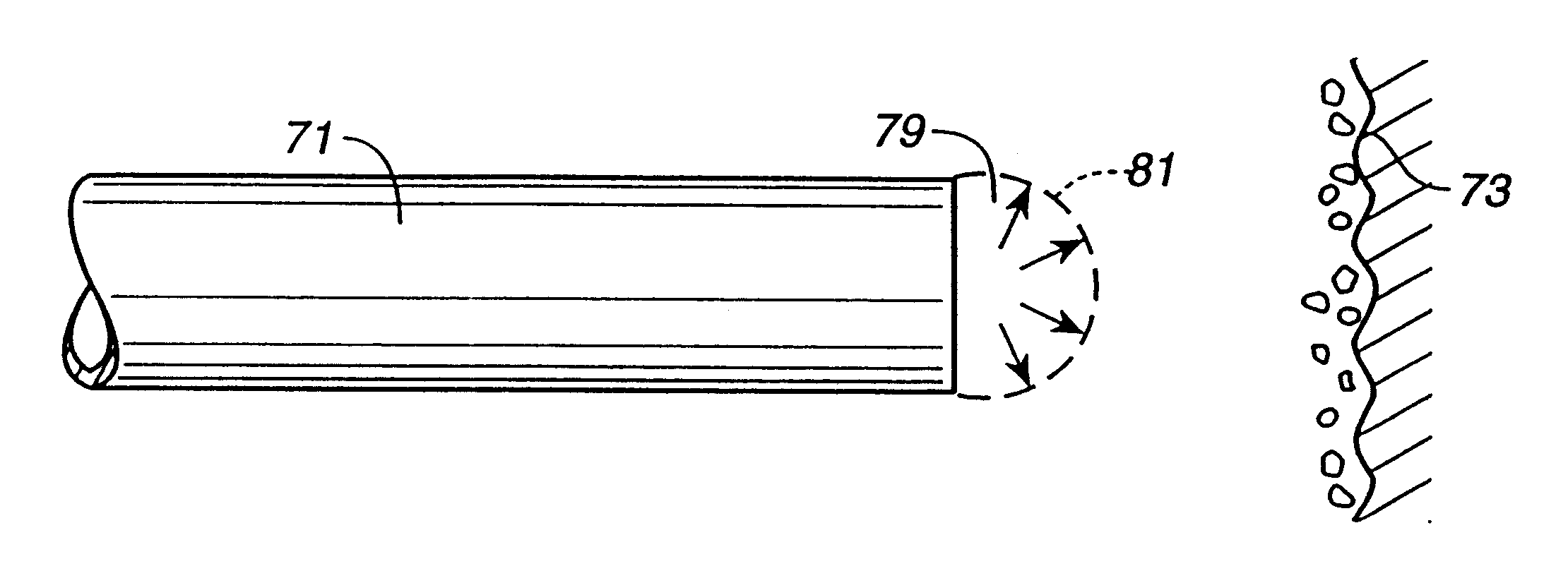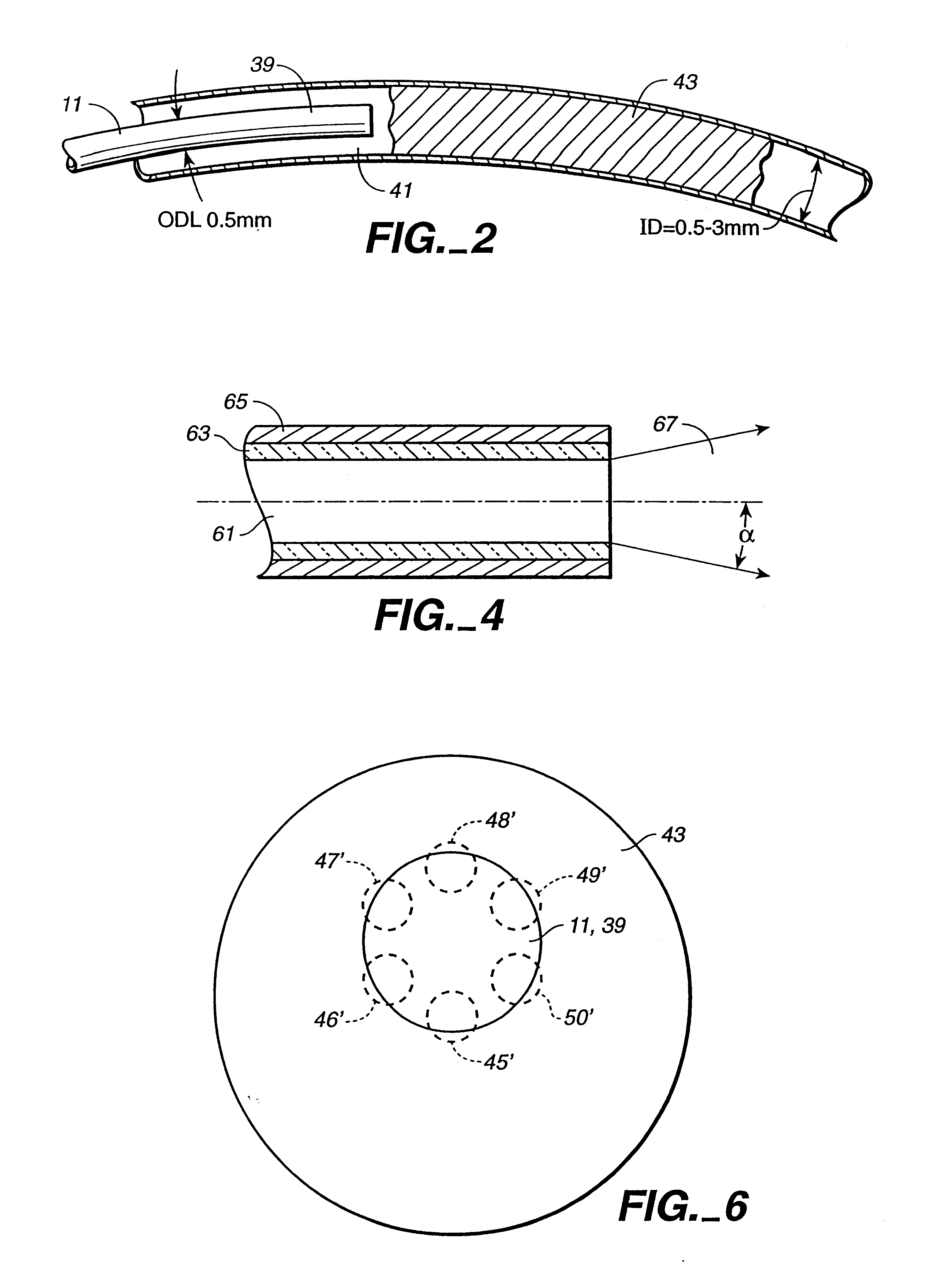Photoacoustic removal of occlusions from blood vessels
a technology of occlusion and photoacoustic removal, which is applied in the field of photoacoustic removal of occlusions from blood vessels, to achieve the effect of keeping the amount of heat input to the vessel at a low level and keeping the power input low
- Summary
- Abstract
- Description
- Claims
- Application Information
AI Technical Summary
Benefits of technology
Problems solved by technology
Method used
Image
Examples
Embodiment Construction
[0028] The present invention may, in general, be applied to the removal of material forming a partial or total occlusion of any human vessel but is particularly directed to opening a blood vessel that is totally or substantially blocked to the flow of blood. More specifically, the preferred embodiment of the present invention is directed to the removal of a clot from a blood vessel in the brain that has caused an ischemic stroke. If the flow of blood is, restored in the vessel within a few hours of the onset of the stroke, permanent damage to the blocked vessels is avoided.
[0029] Before applying the techniques of the present invention to a patient with symptoms of a stroke, a physician first determines whether the stroke has been caused by a hemorrhage or a blockage of a cerebral vessel. This is usually determined by use of a standard computed tomography (CT) x-ray test. If it is determined by the CT test that the stroke has been caused by a blocked cerebral vessel, the blockage is...
PUM
 Login to View More
Login to View More Abstract
Description
Claims
Application Information
 Login to View More
Login to View More - R&D
- Intellectual Property
- Life Sciences
- Materials
- Tech Scout
- Unparalleled Data Quality
- Higher Quality Content
- 60% Fewer Hallucinations
Browse by: Latest US Patents, China's latest patents, Technical Efficacy Thesaurus, Application Domain, Technology Topic, Popular Technical Reports.
© 2025 PatSnap. All rights reserved.Legal|Privacy policy|Modern Slavery Act Transparency Statement|Sitemap|About US| Contact US: help@patsnap.com



